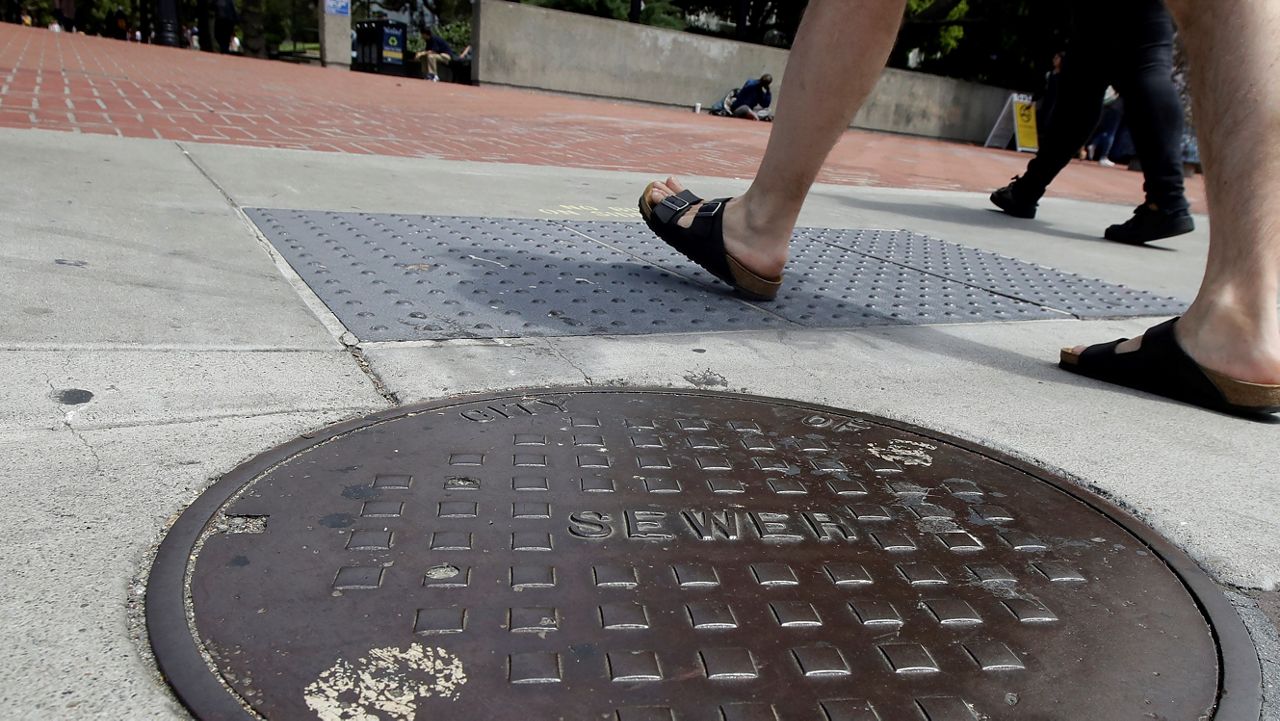WISCONSIN — Spending on dirty water management in Wisconsin remains among the highest in the nation, according to the latest Wisconsin Policy Forum report.
What You Need To Know
- Spending on dirty water management in Wisconsin remains among the highest in the nation
- Wisconsin municipalities spent $1 billion, or 14.9% of their overall expenses in 2021 on handling both sanitary and stormwater sewers
- Increased rainfall, aging infrastructure and stricter federal regulations on things like PFAS are just some of the factors leading to the increase in spending
- Wisconsin Policy Forum said considering more federal funding as well as providing more flexibility in regulations could help
Wisconsin municipalities spent $1 billion, or 14.9% of their overall expenses in 2021, on handling both sanitary and stormwater sewers.
Over the last two decades, spending on sanitary sewers has grown steadily. It’s increased at an annual rate of 3.3%, outpacing the spending rate of operating and capital expenditures by local governments.
According to a Jan. 2021 report from Wisconsin Policy Forum, local and state governments spent $151 per capita in 2017 on sewage operations — the fourth highest in the country.
Management of sewer systems has long been a basic service seeking to protect public health and the environment.
But now, there are other factors driving up costs.
Increased rainfall, aging infrastructure and stricter federal regulations on things like PFAS are just some of the factors leading to the increase in spending, Wisconsin Policy Forum said.
What's the difference between wastewater and stormwater?
- Wastewater: The water from homes, businesses and factories that flows into a sanitary sewer system. From there it goes to treatment plants that clean it and release it back into bodies of water.
- Stormwater: Rainwater that falls on urban areas and flows into management systems, which help it flow faster downstream, or store it temporarily to prevent flooding and clean it.
Additional utility fees
Some of the growth in stormwater spending in the last two decades coincides with an additional utility fee that was created in municipalities.
The fee stems from federal regulation seeking to better control urban pollution from stormwater.
In the 1999 federal rule, regulators expanded the number of local governments required to obtain permits for polluted stormwater runoff. It also authorized the creation of utilities used to manage the flow and pollution of stormwater through things like seepage systems, wetlands and other storage structures.
To fund these projects, a dedicated fee can be issued to residents that’s separate from sewage fees or property taxes. Madison was the first to create a dedicated fee in 2001. Wisconsin currently has 123 stormwater districts.
Dedicated utility fees are based on a portion of a parcel of land that’s covered by a hard surface, like parking lots or concrete patios. These fees exist because surfaces like this prevent water from getting into the ground and add to the amount of water that can carry pollution into lakes or rivers.
Technically speaking, charges for stormwater depend on a measurement unit called Equivalent Residential Units (ERUs). Larger structures will pay more for stormwater than smaller ones. These fees are also not regulated by the state Public Service Commission, which means they can be raised by local elected officials.
In 2022, annual residential stormwater fees ranged from $10.30 in Mukwonago to $244 in Bayside. On average, the annual fee was around $69.11 per residential property in 2022.
While these fees are a driver of increasing costs, climate change also factors in.
Increasing rainstorms cause more problems
As rainstorms become larger, the amount of water that stormwater systems need to handle increases.
According to National Oceanic and Atmospheric Administration data, average statewide precipitation between 1940-50 was about 30.8 inches per year. That increased to 35.2 inches between 2008-18. Wisconsin Policy Forum officials said this increase in rain is expected to continue.
The State Department of Natural Resources estimated that Wisconsin will need $600 million in new stormwater funds to meet needs across the state.
However, this number does not represent the full amount needed, as it doesn’t include funds for replacing aging infrastructure and dealing with increasing flood risks.
Regulation plays a key role
Regulatory changes for things such as PFAS or phosphorous can drive up costs too.
In 2010, the state limited phosphorus in surface water, which can cause algae blooms. Wisconsin DNR and the Department of Administration suggested these new regulations might cost an additional $1.6 billion in capital costs and $67 million in annual operating costs.
Despite the projections, spending related to the regulation did not reflect a substantial change in the past decade.
Wisconsin Policy Forum officials attributed that to flexible options in the phosphorus policy. Those options allowed treatment plants to bypass paying for major investments in technology and instead go about reductions by paying for farm practices that would limit runoff.
Research has shown that allowing options like this can help save costs.
In a study by the University of Wisconsin-Stout and Marquette University, researchers found that ratepayers could expect a 22% increase for facility or technology upgrades designed to comply with regulations. That rate dropped to 5%-8% when systems were able to reduce pollution through actions, such as paying for the farm practices.
Wisconsin Policy Forum officials said this shows the importance of flexibility when implementing new requirements in the law.
Additional federal funding can also help, the report said. This will help avoid placing the burden of the cost on users, Wisconsin Policy Forum said.
As managing PFAS in the state becomes a bigger priority, the report said it may lead to significant changes and costs in the management of sewer and stormwater systems. Wisconsin Policy Forum said that’s why utilizing tools, such as options in regulations, may be necessary moving forward.



